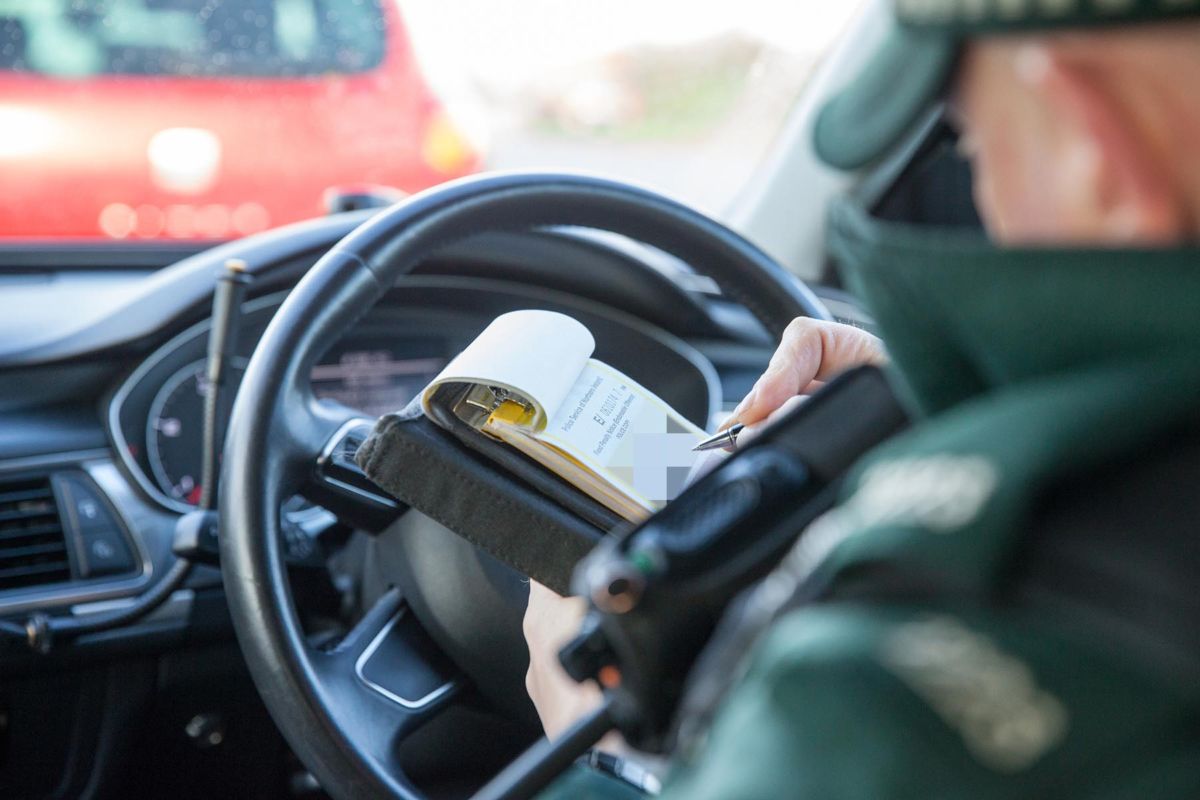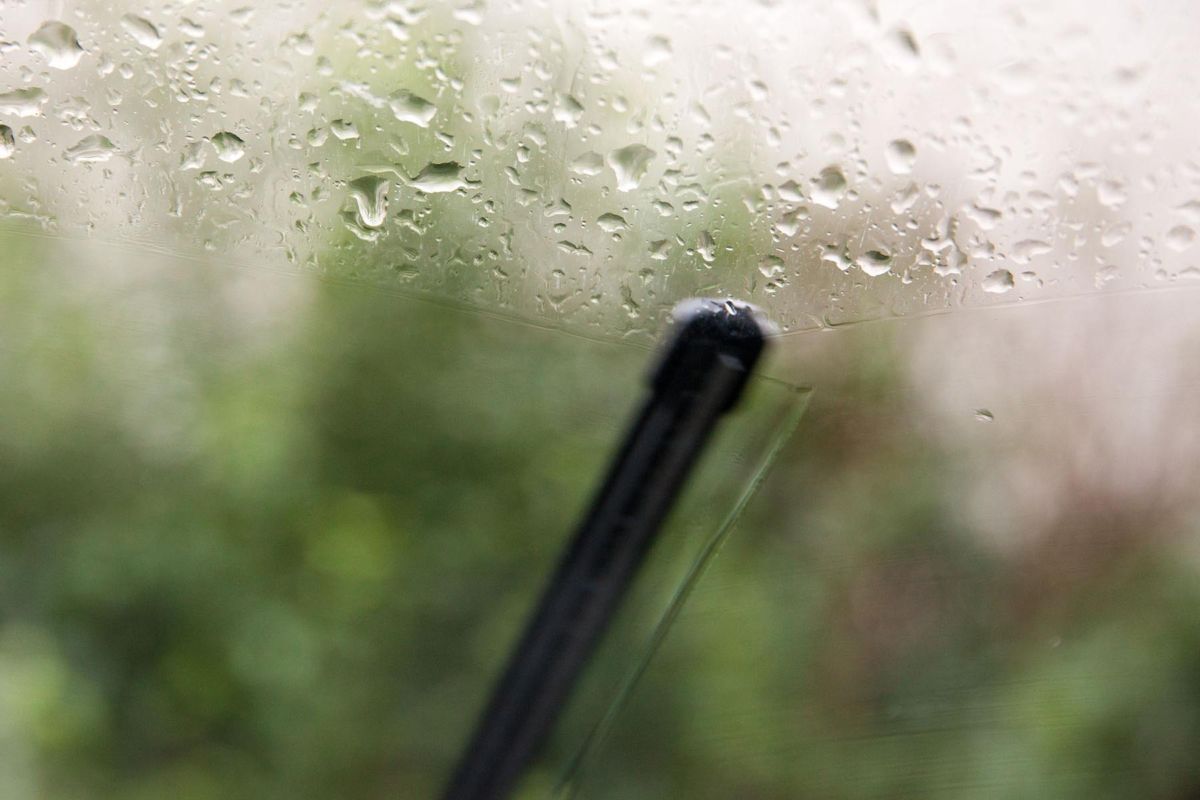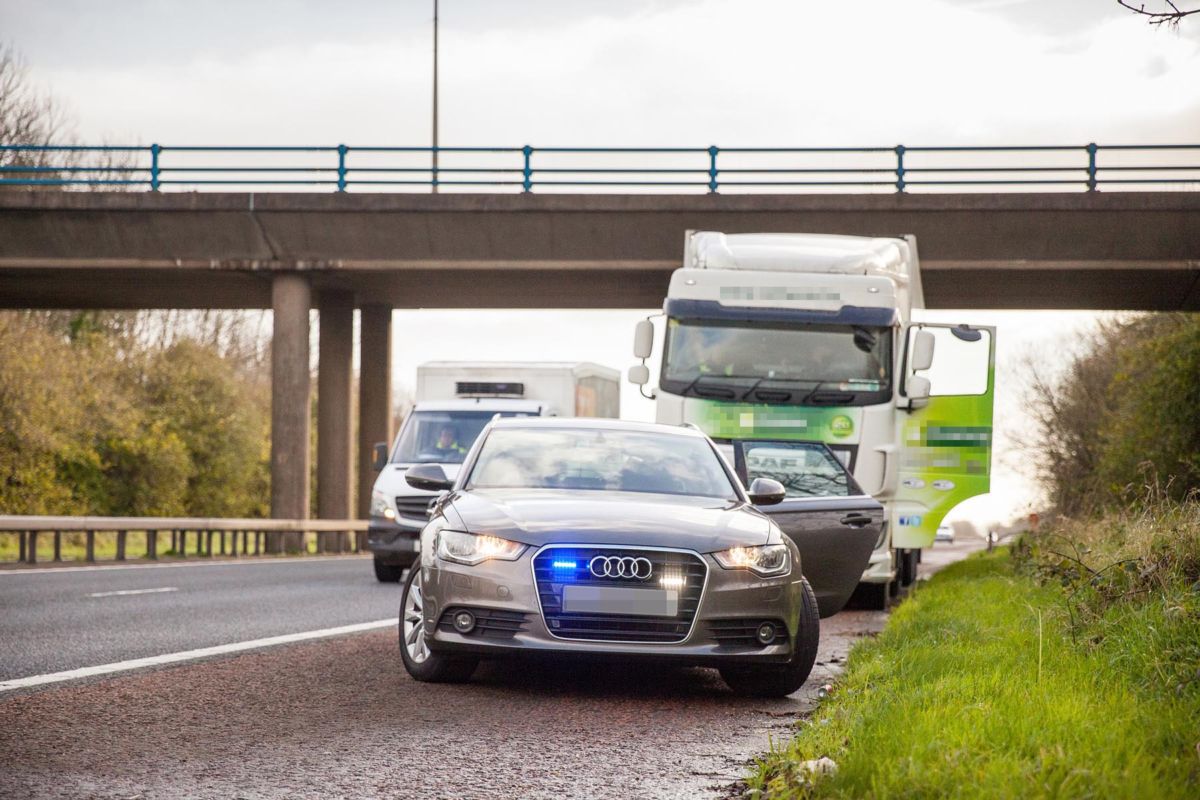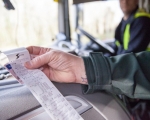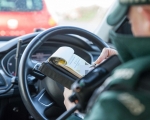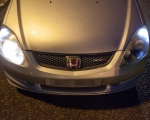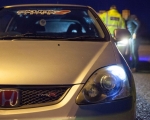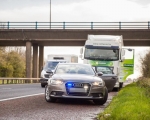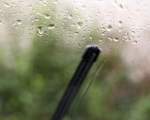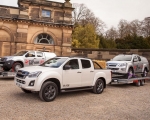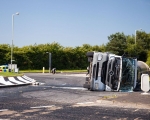You may well have read my mutterings just the other day with reference to road safety and how I spent a shift alongside the Police Service of Northern Ireland’s Roads Policing Team.
Documenting photographically as well as scribbling on my trusty old notepad, it gave me the chance to see first-hand what drivers and police face on a daily basis regarding dangers and legalities on our roads.
Previously I glossed across several issues, before focusing on tyres and in this article I aim to talk about light, sight and towing as these are issues that drivers face daily, especially coming into winter.
Lights are something that we use in abundance on every single commute – whether its head lights or tail lights, main beam or fog lights, reverse lights or those lights which seem to be optional on many cars, indicators – lights are part and parcel of motoring.
A car that was stopped for defective lighting
All lighting on a vehicle is important and it is crucial that you check your lights on an almost weekly basis, if not daily. Not only for the safety of you and your occupants, but also for that of other road users who rely on seeing your lights as a pre-warning for what your vehicle is, or is about to do.
Be sure that your lights are free front dirt at all times, especially in winter.
I agree that we don’t always have the time to, nor the wish to stand in the cold and wash our cars, but at least grab a wet sponge or rag, maybe even a baby wipe, and clean all lights as often as possible to be sure you have the best chance of optimum illumination.
Cars that are equipped with certain types of headlamps will come with headlamp washers, these will get checked at every MOT, but on newer cars, it is always good to keep an eye on them and be sure they operate as they should and that the washer jets are not blocked.
With a dodgy aftermarket LED sidelight, a dipped beam bub that didn’t work and fading across the headlamp, is it any wonder this car got stopped
Many older cars suffer from ‘headlight fade’ as you can see in the image above – this fade is due to the degradation of the plastic or simply due to the lacquer failing over time. This matt, musty finish is enough to reduce the power of your lighting and perhaps even upset the beam pattern.
Ultimately this is a potential MOT fail, but at the very least, creates blurred vision– don’t worry though as it is a simple fix from a local car cleaning expert or if you are a do-it-yourself kind of person, headlight restoration kits can be bought at humble money from most motor factors.
I mentioned there about headlight ‘beam pattern’ and this is something that is checked at every MOT and in my opinion should be checked a couple of times a year by a mechanic with the right machine to check headlight alignment.
Also use your lights and indicators at all times, even when you don’t think you need to, its good practice to ALWAYS use them! All too often I see cars swerving from their lane, into an oncoming lane with no signals on either turn of the wheel whilst passing parked cars or cyclists, this is not only illegal, but dangerous!
See the road ahead with clean windows and functional wipers
Vision on the roads is also helped by keeping windows clear of internal condensation as well as removing dirt and grim outside, aided with the help of good wipers. Before setting off on a journey, especially when it is wet, allow time to demist the inside windows FULLY before setting off.
Use air conditioning if your car has it, at a mild temperature, as this will dry the air within the cabin and clear the windows more effectively. Also when driving, it’s a good habit to always keep your blower on its lowest fan setting to keep air circulating rather than turning the fan on and off constantly.
Be sure your wipers themselves are in good condition, free from rips or tears, are supple and cleaned frequently. Additionally, keep your washer fluid reservoir topped up with water and in winter add an antifreeze/cleaning additive.
With all the aforementioned now in good shape, don’t forget to check the washer jets located on the wiper arms, the plastic panel at the bottom of the windscreen or on the bonnet to ensure they are operational, free from dirt and grim and that water actually gets good coverage on the windscreen when applied.
This image is a prime example of a ‘full load’ – be sure you are legal to tow
Towing is something many of us carry out, either on a daily, weekly, monthly or annual basis.Be it an HGV driver earning a living, a tradesman carrying equipment between jobs, a happy camper on route to Portmagic with their caravan or someone like myself who frequently had a race car on-tow.
With towing, come rules – rules that are incredibly hard to decipher, rules which very few understand, others think they know – however with some common sense, safe towing is achievable and I hope the following aids understanding of the rules.
Reference is made to the Maximum Authorised Mass (MAM) of vehicles and trailers. This should be taken to mean the permitted maximum weight, also known as the gross vehicle weight – it will be stated on a vehicle’s V5 certificate or via a plate/sticker attached to vehicles, trailers or caravans.
Constable A checks the tacograph read out on a lorry that was stopped on the M2 for lane discipline
Category B on your driving license allows you to drive vehicles up to 3,500kgs MAM with up to eight passenger seats. This type of vehicle may be coupled with a trailer over 750kgs MAM, provided the combination (train weight) does not exceed 3,500kgs MAM.
Or it could be coupled with a trailer up to 750kgs MAM, provided the combination does not exceed 4,250kgs MAM. Vehicle manufacturers will normally recommend a maximum weight of trailer appropriate to their vehicle. Details can usually be found in the vehicle’s handbook or obtained from car dealerships.
For example, if you are driving a 2007 VW Passat Estate, legally you will be allowed to tow a MAM of 1800kgs (from memory of owning said car in the past) – so with an EMPTY car transporter, or caravan, rated to 3500kgs MAM you would be breaking the law.
This is due to the fact that the car is not legally able to tow 3500kgs MAM (as it is rated to no more than 1800kgs MAM) and also the train-weight MAM would be well in excess of 3500kgs, consequently making its use illegal on Category B license.
Physical weight on-board is irrelevant, as it is the permitted MAM weight that gets checked by police or the DVA. The answer is to do a ‘trailer test’ and you will then get category B+E on your driving license which allows you to drive vehicles up to 3,500kgs MAM along with vehicle-trailer combinations not permitted within category B entitlement.
B+E allows you to drive vehicles up to 3,500kgs MAM combined with trailers more than 750kgs MAM, but not exceeding 3,500kgs MAM so long as the total train weight does not exceed 7,000kgs MAM.
I happened upon this incident recently when a fluid carrying lorry toppled due to the nature of its load – excess speed through roundabout a likely cause
In layman’s terms an Izuzu D-Max towing a 3500kgs MAM car transporter or caravan is fully legal, however the VW Passat can still not legally tow due to the trailer weight MAM exceeding that set by the manufacturer.
When towing, be sure your load is evenly spread and that you use suitable chains or straps to secure any loads. Also be sure that all removable panels are secured and that tyres are within the legal limit and correctly inflated.
Also check lighting on a daily basis and it is recommended that orange side marking lights or reflectors are installed to ensure oncoming traffic know you are towing, especially on dark meandering roads at night.
It is also worthwhile checking that you are insured to tow as many insurers will ask if you have a tow bar fitted and if so, what do you tow – double check you are actually insured when towing and be prepared to get escorted to a weigh bridge at any time to be sure you conform to the weight limits.
Additional editorial content Source: NI Direct



